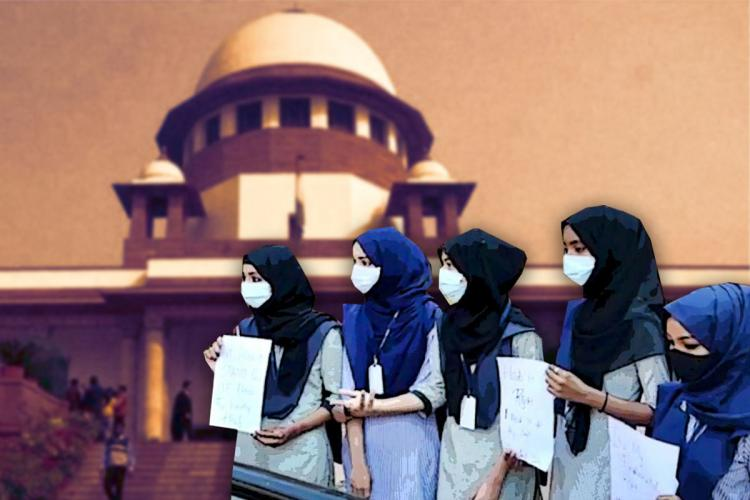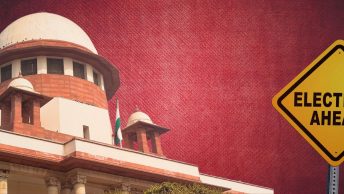A division bench of the Supreme Court recently delivered the much-awaited verdict in the case of Aishat Shifa v. State of Karnataka. It was a split decision, wherein Gupta J. upheld the ban on the wearing of the hijab and the impugned governmental order (“GO”), while Dhulia J. declared the GO unconstitutional for violating Articles 19, 21, and 25.
Nevertheless, it is crucial to analyse Dhulia J.’s reasoning to see how he treats the question of essential religious practice (“ERP”). His judgment may pave the way for a much-needed improvement in our religious freedom jurisprudence by allowing for a self-definitional approach to claim religious rights. This essay aims to highlight the four noteworthy (and legally sound) holdings in Dhulia J’s judgment and the impact they would have on ERP jurisprudence.
Qualifying a practice as an ERP – Mission Impossible?
Before going on to Dhulia’s judgement, it is important to point out the legal standard for a practice to qualify as an ERP. The ERP test primarily has three prongs and only if all three prongs are satisfied can a practice be protected under Articles 25 and 26. First, the optionality test, i.e., only if a practice is obligatory will it be protected as an ERP. This means that if a practice is merely optional, it can never be protected under Articles 25 and 26 (Mohd. Hanif Quareshi v. The State of Bihar). Second, the ‘but for’ test, i.e., but for a given practice the fundamental character of a given religion would change, and without the practice, the religion cannot survive. Third, the recency test, i.e., a given practice must be practised from time immemorial to qualify as an ERP (Commissioner of Police v. Acharya Jagdishwarananda). Any practice will be protected as an ERP if it meets all three tests. This essentially narrows down the scope of the rights such that practically, no practice can meet this standard thereby rendering Articles 25 and 26 meaningless and obsolete unless the court refuses to either consider this standard – as was the case with Amnah Bint Basheer – or finds a way to get away from the ERP jurisprudence. It is in this backdrop that we must see Dhulia J’s holding in the judgement.
The Inherent Subjectivity in the ERP Test
First, Dhulia J. rightfully echoes Chandrachud J’s concerns in the Sabarimala Temple Entry Case of courts being neither suitable nor capable of entering into the religious domain and determining which practices are essential to religion. There has been endless literature arguing that the ERP test needs to be reconsidered for this reason. The concerns laid down by Dhulia J. are valid since judges are neither trained to read scriptures nor should they be. As Rajiv Dhavan and Fali Nariman put it – by interpreting scriptures, judges have virtually assumed the status of a dharmasastri. Not being trained in reading scriptures judges virtually adorn the role of a clergy within the ERP framework. It is also evidently clear from the application of the ERP test that it is inherently subjective and therefore, dangerous.
Apart from what the scripture says, it also depends on who the judge in a given case is. In Amnah Bint Basheer, the Kerala HC held, in the context of students appearing for examinations, that hijab is an ERP and therefore protected under Article 25. Contrast this with the Karnataka HC’s decision in Resham, where they distinguished the case on facts by arguing that Amnah Bint Basher was for only a given set of examinations, which was a ‘one-time affair’, and the case at hand is regarding school uniforms in general. If wearing the hijab during examinations meets the ERP standard, it is unclear how wearing the hijab over the school uniform does not. If wearing the hijab is an ERP, it cannot magically stop being one just because the facts of a given case are different. Comparing these two cases precisely shows how dangerous the ERP test is and how much power a judge, who is not trained in scripture or religion, in deciding which practices constitute ERP.
Context and Historical Background of the ERP Test
Second, interestingly, Dhulia J. highlights how the ERP test was introduced in a particular context, i.e., in cases where there was a question of state intervention and both Articles 25 and 26 were involved. This proposition had been suggested by Aparna Chandra, Farrah Ahmed, and others in detail even before the Karnataka HC heard the case. The idea is that courts formulated the ERP test in a particular context, i.e., to assess the constitutionality of legislations regulating religious institutions. The ERP test was to be employed only in cases where the State sought to defend its policies on the ground that a legislation was bringing in either social reform or regulating secular or financial aspects of religious institutions. The ERP test was never meant for situations where individuals claim their Article 25 rights. It was only meant to be applied when there was an element of social reform on the part of the state and therefore, both Articles 25 and 26 rights are involved. Therefore, even if ones reads Shirur Mutt to have laid down the ERP test, it is inapplicable in the given case. This finding is significant as this leaves space for a deferential approach to be taken by the court, which leads us next to the sincerely held belief test.
The Sincerely Held Belief Test – The Way Forward?
Third, in para 34 Dhulia J. states–
“Whether wearing Hijab is an ERP in Islam or not is not essential for the determination of this dispute. If the belief is sincere, and it harms no one else, there can be no justifiable reasons for banning Hijab in a classroom.”
He, therefore, points towards a different test regarding an Article 25 violation instead of the ERP, i.e., the sincerely held belief test, which has its origins in the United States jurisprudence. While Bijoe Emannuel also points towards the sincerely-held belief test, this case is perhaps the test’s most direct acknowledgement and approval in India. In superimposing the American test to the Indian context, there would be a two-step process (which Dhulia J. also employs)–
- First, the courts decide if the members of a religious community sincerely hold a religious belief; and
- Second, if the restrictions laid down are reasonable, i.e., can they be satisfied by the proportionality test on the grounds of public order, morality, health or of a violation of part III?
In the given case, it is evident that the hijab would have satisfied these two stages and would therefore be protected under Article 25. It was nobody’s case that the Hijab is not a religious practice; during the hearing stage, the state admitted that while the Hijab may be a religious practice, it does not meet the high standard to qualify as an ERP. In applying the sincerely held belief test, that high standard does not need to be met. If the petitioners can prove that they wear the hijab sincerely as a matter of faith, that would be enough.
The author believes that Dhulia J. has interpreted Article 25 correctly by applying the sincerely held belief test. The current three-step test post Acharya leaves no scope for religious rights, rendering Article 25 meaningless, for there cannot be any single practice that would alter the ‘fundamental character’ of religion. The sincerely held belief test is also consonant with Professor Jaclyn Neos’ deferential approach to religious rights. In Neo’s framework, courts should adopt a deferential approach that relies primarily on the self-definition of the religious claimant. The court may check for the sincerity of belief in the deferential approach too; however, any limitation of the right must necessarily come from the explicit restrictions laid down therein. The ERP test on the other hand, does the opposite as it diminishes the scope of the right itself, while the sincerely held belief test enlarges the same. It ensures that the only way for the state to restrict religious freedom is on the grounds laid down in Article 25 itself.
A Proportionality Analysis
Lastly, Dhulia J. makes a critical point about proportionality. He holds that post Modern Dental College, all fundamental rights violations should be tested on the anvil of proportionality. The idea of using proportionality in Article 25 violations also furthers the self-definitional approach propagated by Neo and is, in the author’s view, correct. Any violation of rights under Articles 25 and 26 should, therefore, simply see if a practice is religious (as opposed to being essential to religion). If it is, it can be curbed only on restrictions of public order, morality and health in addition to Part III violations. The state may restrict the right only under these limited grounds and only if it can satisfy the four-pronged proportionality test. The proportionality test would include the impugned state action being based on a legitimate goal, suitable for the given purpose, must be necessary i.e., there should not be a lesser right restrictive alternative and lastly, must keep in mind the balancing of rights.
Conclusion
To conclude, if courts now adopt Dhulia J’s method to decide a case regarding Article 25, they would first have to just check if a belief is sincerely held; if that can be proved, nothing else is prime facie required to be proved to claim protection under Article 25. The next step would be to check if the impugned state action can be categorised as a reasonable restriction and is based on the grounds of public order, morality, health, or a violation of Part III. To check for restrictions, the proportionality standard needs to be employed whereby the burden of proof is on the state to prove how the law has a legitimate goal, suitable, and necessary and takes into account the balancing of the right – this is in stark contrast with the entire burden being on the person claiming the right. This way of interpreting Article 25 infuses new energy into an otherwise meaningless Article (as it stands with the ERP doctrine today). One may be hopeful that this might be the beginning of giving the ERP test a well-deserved burial.
Rushil Batra is a second-year law student at NLS, Bangalore, and would like to thank their constitutional law professor, Aparna Chandra, for her insightful class discussions.
This piece is edited and coordinated by Harsh Jain and published by Avani Vijay from the Editorial Team.







[…] Posted byRushil Batra […]
Thank you for your sharing. I am worried that I lack creative ideas. It is your article that makes me full of hope. Thank you. But, I have a question, can you help me? https://accounts.binance.info/en-IN/register-person?ref=UM6SMJM3